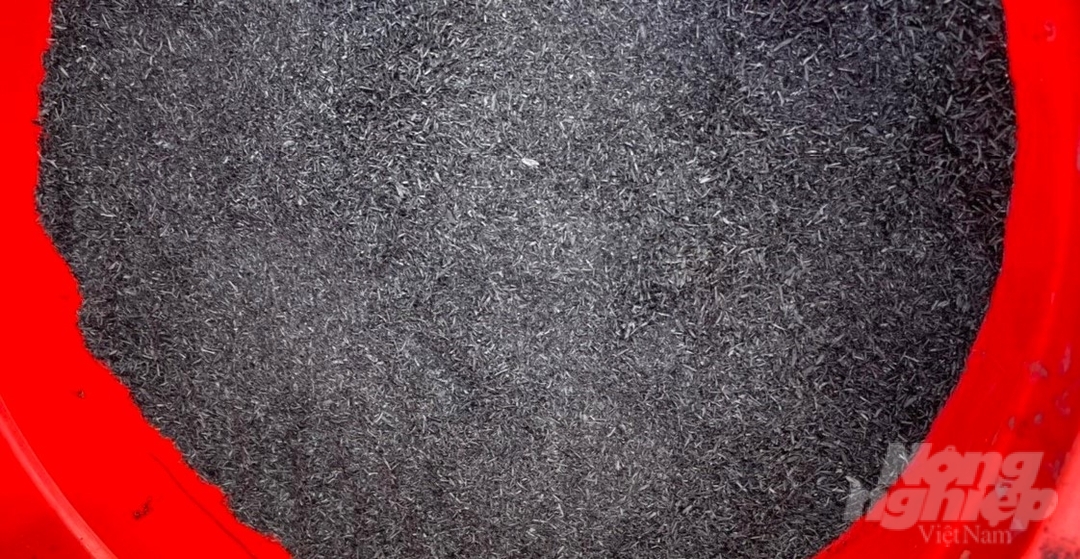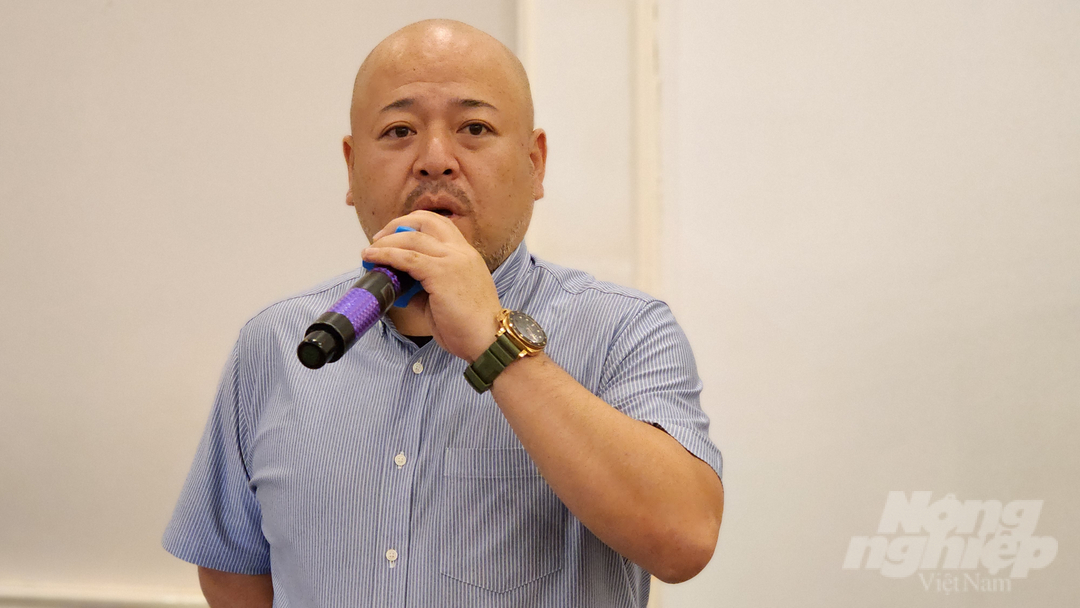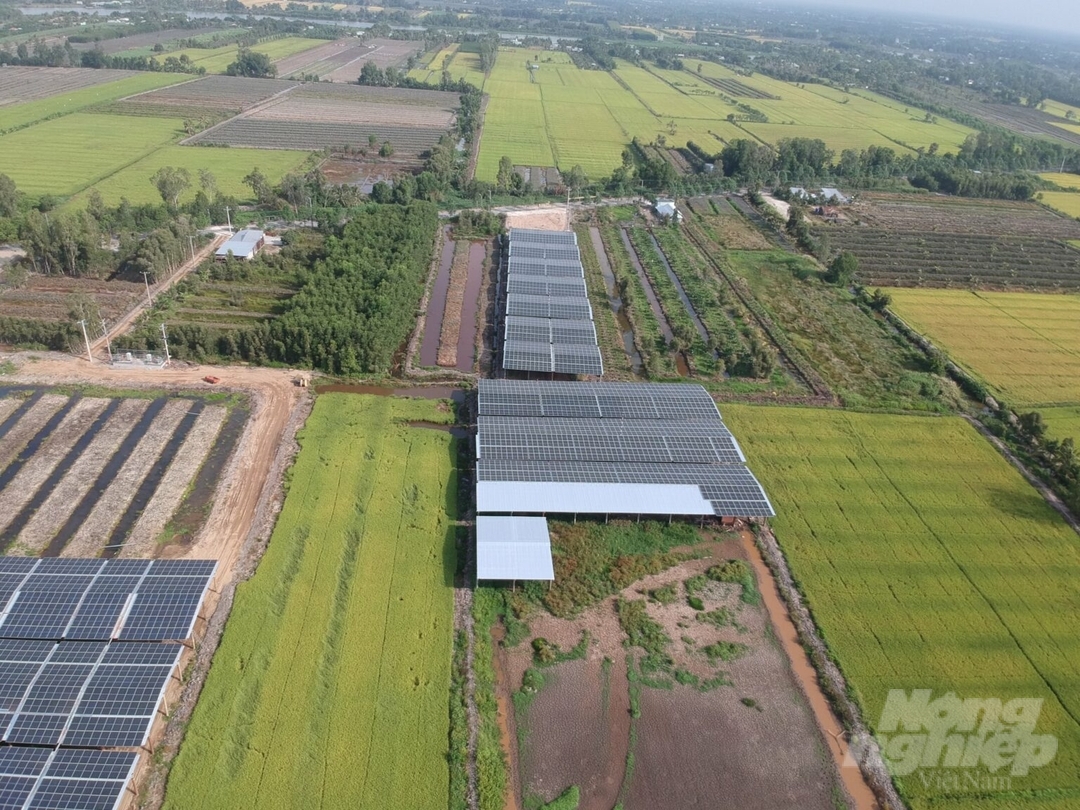[ad_1]
Biochar is considered the “black gold” for agricultural production in the direction of organic, circular emission reduction. Biochar has great potential from agricultural by-products.
Biochar is known as a form of carbonized material made from agricultural waste and by-products. In the Mekong Delta in particular, this raw material is very plentiful at around 120 million tons/year, but has not yet been fully exploited.

Biochar is a form of carbonized material made from agricultural waste and by-products. Picture: its metal.
At the recent “Application of Biochar in Agriculture” seminar held in Can Tho City, Mr. Nguyen Tan Nhon, Deputy Director of the Ministry of Agriculture and Rural Development of Can Tho City, assessed that the application of biochar in agricultural production is the solution contribution to reduce greenhouse gas emissions from agriculture. By creating value from agricultural by-products – an abundant source of raw materials – biochar has become the “black gold” for helping soil retain water and nutrients and protecting beneficial microorganisms.
In Asian countries, charred materials from rice hulls or other by-products are used as soil amendment materials, which are valuable as fertilizers. Especially in Japan, since the 1990s, the technique of using biochar has been officially popularized to cater to the spread of organic farming.
Meanwhile, the application of biochar in Vietnam is still very limited. Masaaki Uesugi, President of Japan Tromso Joint Stock Company, assessed that biochar is used in agriculture to fertilize many crops, especially rice.
Biochar itself has some components that can replace fertilizers, good CO2 absorption. The use of by-products such as rice straw, rice husks, coffee husks… also contributes to reducing greenhouse gas emissions.

Masaaki Uesugi, President of Japan Tromso Joint Stock Company, assessed that biochar contains a number of ingredients that can replace fertilizers, effectively increasing soil fertility and increasing crop yields. Picture: its metal.
“As biochar decomposes, it also produces an organic fertilizer that recycles, deodorizes and disinfects the soil. When biochar is used in combination with some other microbial products, it is possible to create a layer of biological mats for livestock,” Mr. Masaaki Uesugi pointed out.
Mr. Nguyen Quang Loc, Head of R&D Department (HG Farm Co., Ltd.) developing a circular agricultural production model in Hoa Tien Township, Vi Thanh City (Hau Giang Province), is very interested and has an idea to Using biochar in production. Because according to Mr. Loc, HG Farm has also applied many models of organic farming, circular economy and biochar in the past period, which will help the unity model become more perfect.
Through research, Mr. Loc found that biochar contains microorganisms. When these beneficial microorganisms are added to the soil, they create a source of nutrients that plants can easily absorb. In addition, biochar is particularly attractive because now the topic of CO2 certificates is becoming “hottest” in connection with emission-reducing production.

Circular Economy Production Model of HG Farm Company in Hoa Tien Township, Vi Thanh City, Hau Giang Province. Picture: its metal.
“Circular economy wants to be successful, it needs the support of science, technology and mathematics and will create a continuous flow of energy and materials in agricultural production with the professionalization of agriculture. Currently, HG Farm is researching and incubating a plan to develop water hyacinth biochar to diversify the way of circular economy and organic farming development,” said Mr. Loc.
At present, the sources of raw materials for biochar production, especially in the Mekong Delta and across the country in general, are very rich and cheap, such as rice husk, water hyacinth, coconut shell, bagasse… Meanwhile, the cost of inorganic fertilizers is relatively high, so the reuse of waste and by-products to form biochar solve many problems in production costs, increase farmers’ profits, lead to the goal of developing green, environmentally friendly agriculture, adapt to climate change, meet domestic demand and be export-oriented.
[ad_2]
Source link

